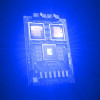New techniques for detecting hardware Trojans
Most Internet users know about the existence of software Trojans, but that of hardware ones is less known. They consist of integrated circuits that have been modified by malicious individuals so that when triggered, they try to disable or bypass the system's security, or even destroy the entire chip on which they are located.
As hardware devices are almost exclusively produced in countries where controls about who has access to the manufacturing process are non-existent or, at best, pretty lax, government agencies, military organizations and businesses that operate systems critical to a country's infrastructure can never be too careful when checking whether the devices they are planning to use have been tampered with.
There are a number of techniques for detecting hardware Trojans, but they are time- and effort-consuming. So a team of researchers from the Polytechnic Institute of New York University (NYU-Poly) and the University of Connecticut have decided to search for an easier solution, and came up with the idea of "designing for trust."










































































